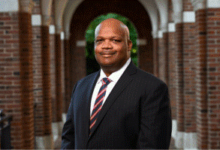
By Dr. Elizabeth V. Primas
High School students have worked hard to catch up for lost time and negative experiences due to COVID-19. Students have struggled to pass courses, to apply for, and be accepted into a college. Formal assessments such as the ACT (The ACT – Solutions for College and Career Readiness | ACT ) administered between December and June; and the SATs (https://satsuite.collegeboard.org) administered between October and March. The assessments for courses in Advance Placement (AP) ( https://apcentral.collegeboard.org/exam-administration-ordering-scores/exam-dates); and International Baccalaureate (IB) (https://www.ibo.org/programmes/diploma-programme/assessment-and-exams/exam-schedule/ ) are given in May. The scores are sent directly to colleges and universities, and copies are sent to the respective high school and students. While some colleges and universities are doing away with requiring different admission exams, unless you are sure of your college choices and their requirements, prepare to take the exams.
Different high schools may offer site visits to colleges and universities, either in-person or virtually (HBCU List Map By State – HBCU First). Students should match colleges and universities with their individual goals and ambitions. If the desired career is in medicine, look at four-year colleges that offer pre-med. Once the applications have been submitted, the waiting begins. But, the work has not ended. It’s time to start looking for financial assistance. Completing the FAFSA application (Free Application for Federal Student Aid) (https://www.collegemoneymatters.org/) is the first step. Jill Desjean, a senior program analyst stated, “completing the FAFSA application lines students up with scholarships and grant money.” On a zoom meeting, “On the Highway to Pell; Recounting the Journey to Expansive Financial Aid”, the panel identified the Pell grant as one source of college funding (https://studentaid.gov/understand-id/types/grants/pell). The Pell grant eligibility does not align with college cost, so students should also look for additional funds.
Other sources for scholarship funds, specifically for African Americans, include the Anna V. Waters Scholarship Fund (http://www.avwsf.org) and/or (http://www.seedsoffortune.org/) . For additional information on finding college scholarships, go to (https://www.niche.com/scholarships); (https://www.scholarshipsamerica.org/forhighschoolstudents); or (https://accessscholarships.com).
Students should apply for all grants and scholarships they find. Steps for maneuvering through the grant and scholarship maze are many, but the key is to being organized. Also, have income documents available, because many grants are based on needs.
If you have already chosen a career path seek organizations that work in that field, because many offer scholarships and/or internships. They may also link students to mentors. Reach out to different non-profit organizations to see if they offer scholarship funds; like sororities and fraternities; churches and community groups, and alumni groups. Look for internships or mentors that will give you experience and a small salary in your chosen career.
Every year grant and scholarship money is left on the table. One of the reasons is many funding sources require essays. To make this easier, write sample essays in advance. Topics may change, but essays often ask students to write about their extra-curricular activities, such as sports or clubs. As with all good writing follow the processes: brainstorm your ideas; write an outline; identify sources; support your writing by citing sources; clarify tone; write a draft; edit and revise; have extra eyes look at it and provide feedback, including peers, parents, and teachers; proofread; and finally publish your essay by attaching it to your application.
Seek out all resources, especially school counselors because they can help in researching and identifying scholarships and grant opportunities. Apply for every scholarship and grant you qualify for. Counselors serve a large group of students, so you should set an appointment, and be prepared when you meet. Have copies of all your relevant documents when you meet. Know college options that fit your career choices and be prepared to adjust based on financial aid needs and support. Moreover, if funding is limited, think and talk about attending a state college where you live. Or start at a junior college or a community college and transfer to a four-year college when funding is available. If necessary, consider taking a lighter course load and working part-time to pay tuition. The long-range goal is get into your chosen career, even if the pathways may diverge. Don’t give up, be persistent.










